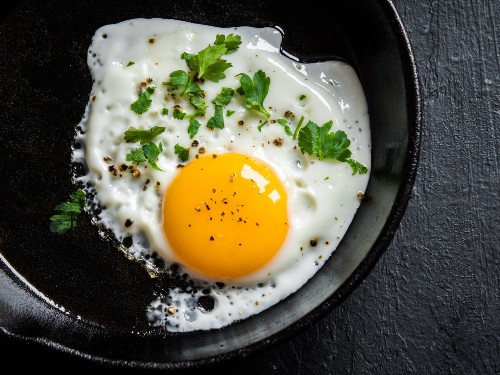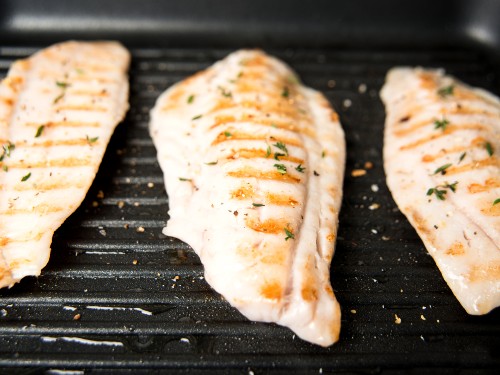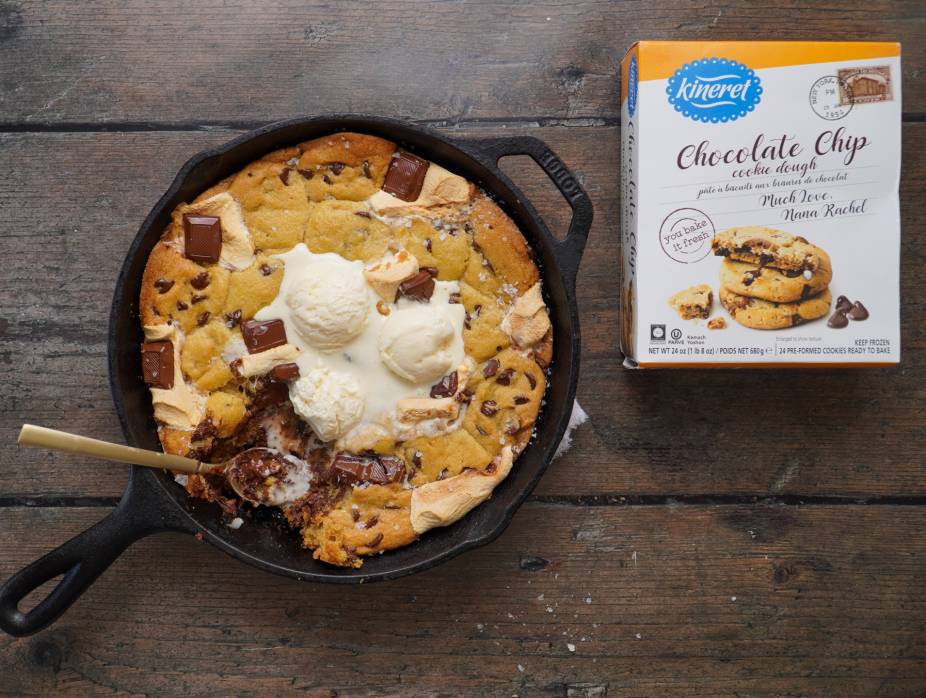By Toby Vogel
My aunt loves to cook old-fashioned Hungarian meals. During a busy Yom Tov season when I was hosting many guests, she came to help. I learned many new tricks and traditional recipes. She also learned some interesting tidbits about healthy cooking: When she tried lifting an empty cast iron pan, she yelled. She cooks with liberal amounts of oil and Teflon non-stick pans. She told me that she had heard so much about cast iron cookware that she actually bought one, but promptly returned it because it became all rusty.
I like pretty and easy-to-clean pots too, but cast iron is the healthiest cooking utensil and adds a depth of flavor that no other cookware can. My children can tell the difference between a chicken cutlet pan-fried with olive oil in a well-seasoned cast iron pan and the same chicken prepared in any other cookware.

What Are The Benefits To Cooking In Cast Iron?
The next time you need a new pan for pancakes, omelets and sautéing vegetables try a smaller size for milchig (dairy). A larger fleishig (designated meat) pan is great for all veggies, indoor grilling and a million other uses
Cast iron pans are nearly indestructible; a one-time investment that gets better with age. They distribute and retain heat very well. They can cook almost any dish and can be used in any oven (even convection). They have a healthy non-stick surface without any synthetic chemicals and even help fortify food with iron. They can also be inexpensive (I prefer the Lodge brand).When buying a pan, match the correct size silicone handle. Cast iron pots and the handles get EXTREMELY hot. Don’t learn the hard way. A silicone cover slips over the handle and makes the pot easy to handle. I buy red handles for fleishig and blue for milchig. The plastic scrapers are also useful, especially the grooved edges, which match the cast iron grill pan.
The next time you need a new pan for pancakes, omelets and sautéing vegetables try a smaller size for milchig (designated dairy). A larger fleishig (designated meat) pan is great for all veggies, indoor grilling and a million other uses. When buying a pan, match the correct size silicone handle. Cast iron pots and the handles get EXTREMELY hot. Don’t learn the hard way. A silicone cover slips over the handle and makes the pot easy to handle. I buy red handles for fleishig and blue for milichig. The plastic scrapers are also useful, especially the grooved edges, which match the cast iron grill pan.

How To Season A Cast Iron Pan

It is best to pre-season cast iron cookware before using it, even if it is labeled as seasoned. This gives the pan a nice non-stick coating. This process is also used if a pot has lost its seasoning or has been cleaned with abrasive detergents. I prefer the stovetop method of seasoning, but if the pan has rusted on the outside, the oven method must be used. (See below for note on the Kashrus of pre-seasoned cast iron pans).
Season a Cast Iron Pan In The Oven:
1. Place a cooking sheet or piece of silver foil on the bottom rack of the oven. Preheat oven to 400 degrees Fahrenheit.
2. Dab a small piece of coconut oil or spray a thin layer of oil on the inside and outside of the pot. Rub in the fat with a paper towel or clean cloth.
3. Place the pan on the middle rack and bake for half an hour. (Some smoke is normal.)
4. Turn off the oven and wait a few hours until the pan has cooled. Then repeat this process at least three times.
Season a Cast Iron Pan On The Stovetop
1. Dab a small piece of coconut oil or spray a thin layer of oil on the inside. Rub the fat with a paper towel or clean cloth.
2. Heat the pan, let it cool and wipe off any grease with a paper towel. If there is still a black residue, repeat the process until you get a light brown color. Sometimes I am brave and in a rush. So I use a heat-proof glove between seasoning to wipe down the grease while it’s hot and season again.
Cooking With Cast Iron Pans

After the pot is seasoned, you can start cooking. Always preheat the pan on a lower flame and then turn up the flame. I use a medium to low flame for almost all cooking. Remember that cast iron retains heat, so even if you lower the flame it will take time for the pot to cool to a lower temperature.
You can cook almost anything in cast iron, besides tomatoes, which are too acidic and will eat away at the seasoning. You don’t want to boil up water in cast iron, either. Also, never shock a cast iron pan with cold water because it can cause irreparable damage. Other than these few basic no’s, everything else goes.
Cleaning Cast Iron Pans

Scrape and go is usually okay after most cooking. Scrape any leftover bits of food. Wipe clean with paper towel or cloth. If necessary spray a bit of oil, wipe it and heat pan to season it again.
If the pot needs a more thorough cleaning, wait until it is cool and rinse with mild soap and water. Immediately heat the pan to evaporate all the water. Cool. Dab a small piece of coconut oil or spray a thin layer of oil on the inside. Rub the fat with a paper towel or clean cloth. Heat and re-season pan.
If the pot is very dirty and has debris stuck-on, scrape it off with a plastic scraper. Then heat the pan slightly and sprinkle liberally with coarse or kosher salt. A thick layer of salt will make it easier to clean. Rub in the salt with a towel, scrub pad or paper towel; as you rub the salt will discolor and help remove all the debris. You can either wipe the salt with a clean paper towel or give the pan a quick rinse with water and then immediately heat the pan to evaporate all moisture. Re-season the pot and it will be good and clean.
Enjoy the healthiest and best-tasting food. Our family favorite is caramelized onions on an extremely low flame and using only minimal fat because a well-seasoned pan doesn’t need a lot of oil. Heat oiled pan, fill with diced onions, leave on the smallest flame and stir as needed.
A Note from OU Kosher On the Kashrut of Preseasoned Cast Iron Pans:
Rav Belsky zt”l said that a pre-seasoned cast iron pot requires libun gamur (complete burning at a high temperature) and the seasoning is considered b’en (physically there). He disagreed with those that argued that the layer of oil is considered absorbed into the surface because it appears to be dry, and that one may therefore kasher with hagalah (boiling water).
Rav Belsky said it should be kashered by running it through the self-clean cycle of the oven.
According to Rav Moshe Feinstein zt”l if one could get an authorized letter from the company confirming that the oil that was used was kosher oil, there is reason to be more lenient to not require libun gamur (possibly no kashering at all).
Please consult with your own rabbinic authority if you have a question about the particular pre-seasoned pan you wish to buy.





